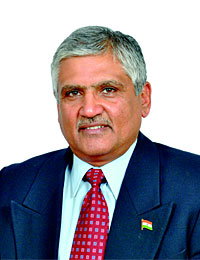Publisher's Note
 The shift towards electric mobility in India can benefit the environment by improving air quality and reducing Greenhouse Gas (GHG) emissions. Oil companies are now offering electric vehicle (EV) charging facilities at more than 15,000 petrol pumps across India, helping build an ecosystem to spur the growth of low-emission vehicles. In electric vehicles, much less lubrication is needed, but it is still needed for various odds and ends on the vehicle. A robust EV charging infrastructure in India can positively impact the growth of the EV market by reducing range anxiety and enhancing EV adoption. If India can achieve its goals, it can also have a positive impact on the country’s economy. It can also inspire other countries, thereby ultimately creating a more sustainable and greener future for all.
The shift towards electric mobility in India can benefit the environment by improving air quality and reducing Greenhouse Gas (GHG) emissions. Oil companies are now offering electric vehicle (EV) charging facilities at more than 15,000 petrol pumps across India, helping build an ecosystem to spur the growth of low-emission vehicles. In electric vehicles, much less lubrication is needed, but it is still needed for various odds and ends on the vehicle. A robust EV charging infrastructure in India can positively impact the growth of the EV market by reducing range anxiety and enhancing EV adoption. If India can achieve its goals, it can also have a positive impact on the country’s economy. It can also inspire other countries, thereby ultimately creating a more sustainable and greener future for all.
Then again, for those in the lubricant space, this is also the time to start asking tough questions and to begin to reposition their businesses to be able to face the challenges of the future. Proper lubrication can therefore prove an effective means of pushing business forward due to its positive impact on equipment performance. Matchmaking is important in the world of lubrication. Each type of machinery requires a certain type of lubricant to be effective; they can’t just be mixed and matched at random. You should also know how much lubricant is required for the workload of the equipment. Not using enough can result in breakdown but using too much is not cost-effective and could even cause machinery to jam.
Proactive maintenance is based on root cause analysis. It is performed while the equipment is in operation, regardless of whether slow down or failure signals have been observed. Appropriate lubrication and cleanliness of lubricants both play an important part here. The challenge going forward for those responsible for managing equipment maintenance is to adopt a new approach that places greater emphasizes on the prevention of mechanical issues and breakdowns by implementing preventive and predictive maintenance strategies, rather than a reactive approach focusing on fixing broken equipment. You simply cannot take a shortcut to cultural change within an organization. Today we see many organizations that have already gone through the transformation, while others have yet to begin. Understandably, there has been resistance to tinkering with past routines and practices. Maintenance and business success are interconnected. It becomes increasingly clear that any decisions that can improve the former are likely to benefit the latter.
The cover story talks about used oil analysis. It has long been a tried-and-true method for machine health condition monitoring. However, it does have its limitations. Therefore, embracing the inherent strengths of additional ancillary non-destructive testing (NDT) technologies provides a holistic approach and places your organization in a place to further succeed. Some additional articles covered in this edition includes: Is liquid sandpaper lurking in your machine? ASTM enhancements to microscopic particle identification and documentation, 4 key elements for interpreting an oil analysis report, top leadership focuses for improved reliability and cost reduction, inspecting a single-point lubricator, lubricant contamination prevention and mitigation, lubrication contamination prevention, why scheduled oil changes aren’t enough to mitigate lubricant contamination, engineering reports should be like bad movies, Maintain? repair? replace? The secrets for implementing a clean lubricant program and much more.
We look forward to your support and feedback to enable us to improve the content and layout of Machinery Lubrication India. We welcome readers to participate by sending their feedback & contributing articles and case studies. We look forward to the continued patronage of the advertisers and the subscribers.
Warm regards,
Udey Dhir
